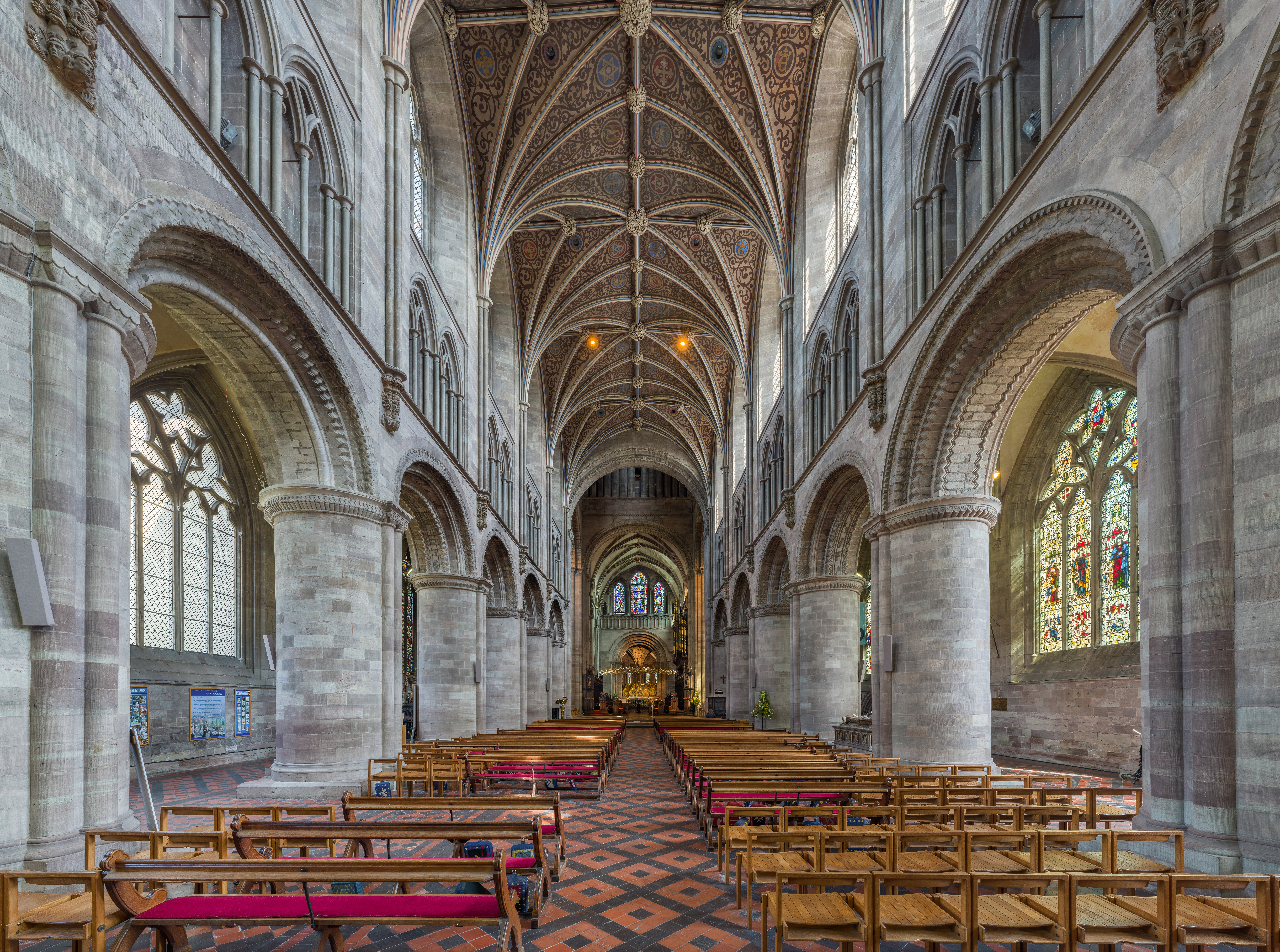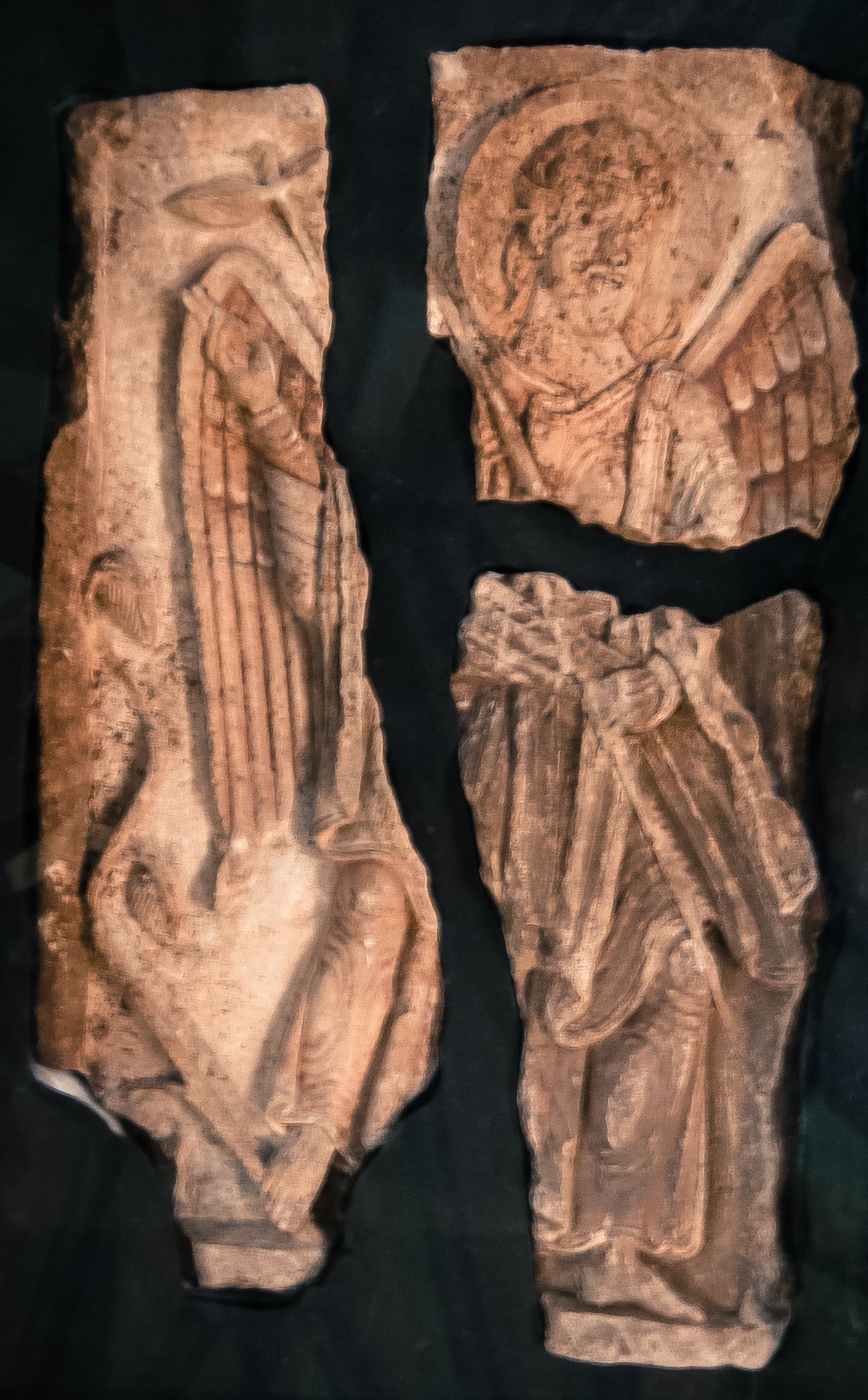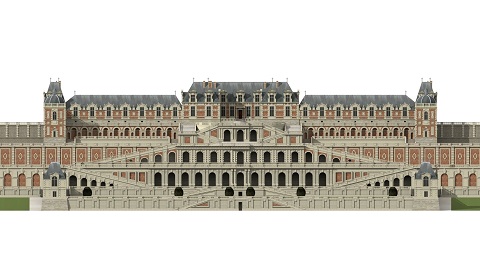|
Thomas Wagstaffe
Thomas Wagstaffe the Elder (13 February 1645 – 17 October 1712) was a clergyman of the Church of England, after the nonjuring schism a bishop of the breakaway church. Early life Wagstaffe was born on 13 February 1645 at Binley in Warwickshire, and was named after his father, who had settled there and married Anne Avery of Itchington; he was related to Sir Joseph Wagstaffe and to William Wagstaffe the physician. He was educated at Charterhouse School. After a short period at Pembroke College, Cambridge in the early 1660s, he moved on in Lent term 1660 to New Inn Hall, Oxford, and graduating B.A. on 15 October 1664, M.A. on 20 June 1667. Two years later he was ordained deacon by John Hacket, Bishop of Lichfield, and in the same year priest by Joseph Henshaw, Bishop of Peterborough, on his institution to the benefice of Martinsthorpe. He became chaplain to Sir Richard Temple, 3rd Baronet (1634–1697), and was made curate of Stowe. Deprived as nonjuror In 1684 Wagstaffe was pref ... [...More Info...] [...Related Items...] OR: [Wikipedia] [Google] [Baidu] |
Church Of England
The Church of England (C of E) is the established Christian church in England and the mother church of the international Anglican Communion. It traces its history to the Christian church recorded as existing in the Roman province of Britain by the 3rd century and to the 6th-century Gregorian mission to Kent led by Augustine of Canterbury. The English church renounced papal authority in 1534 when Henry VIII of England, Henry VIII failed to secure a papal annulment of his marriage to Catherine of Aragon. The English Reformation accelerated under Edward VI of England, Edward VI's regents, before a brief Second Statute of Repeal, restoration of papal authority under Mary I of England, Queen Mary I and Philip II of Spain, King Philip. The Act of Supremacy 1558 renewed the breach, and the Elizabethan Settlement charted a course enabling the English church to describe itself as both English Reformation, Reformed and Catholicity, Catholic. In the earlier phase of the Eng ... [...More Info...] [...Related Items...] OR: [Wikipedia] [Google] [Baidu] |
Lichfield Cathedral
Lichfield Cathedral is an Anglican cathedral in Lichfield, Staffordshire, England, one of only three cathedrals in the United Kingdom with three spires (together with Truro Cathedral and St Mary's Cathedral in Edinburgh), and the only medieval one of the three. It is the cathedral of the Diocese of Lichfield, which covers Staffordshire, much of Shropshire, and parts of the Black Country and West Midlands. It is the seat of the Bishop of Lichfield, currently Michael Ipgrave, who was appointed in 2016. It is a Grade I listed building In the United Kingdom, a listed building or listed structure is one that has been placed on one of the four statutory lists maintained by Historic England in England, Historic Environment Scotland in Scotland, in Wales, and the Northern I .... Overview The cathedral is dedicated to St Chad and Saint Mary. Its internal length is , and the breadth of the nave is . The central spire is high and the western spires are about . The stone ... [...More Info...] [...Related Items...] OR: [Wikipedia] [Google] [Baidu] |
François De Harlay De Champvallon
François de Harlay de Champvallon (François III de Harlay; 14 August 1625 – 6 August 1695) was the fifth Archbishop of Paris. Life and church Early years Harlay de Champvallon was born in Paris, the nephew of François de Harlay, archbishop of Rouen. He was presented to the abbey of Jumièges immediately on leaving the Collège de Navarre, and he was only twenty-six when he succeeded his uncle in the archiepiscopal see. He was transferred to the see of Paris in 1671. In 1674 the domain and lordships of Saint-Cloud, Maisons-Alfort, Créteil, Ozoir-la-Ferrière, and Armentières-en-Brie were erected into a duchy of Saint-Cloud to be held by the successive Archbishops of Paris, although it was not registered in the parlement until 1690. Harlay was the first to bear the title, which was then held by his successors at Paris till the Revolution. The Duke was likewise a ''pair'' of France. Harlay was also commander of the chivalric Order of the Holy Spirit and a member of the ... [...More Info...] [...Related Items...] OR: [Wikipedia] [Google] [Baidu] |
Pope Innocent XII
Pope Innocent XII ( la, Innocentius XII; it, Innocenzo XII; 13 March 1615 – 27 September 1700), born Antonio Pignatelli, was head of the Catholic Church and ruler of the Papal States from 12 July 1691 to his death in September 1700. He took a hard stance against nepotism in the Church, continuing the policies of Pope Innocent XI, who started the battle against nepotism but which did not gain traction under Pope Alexander VIII. To that end, he issued a papal bull strictly forbidding it. The pope also used this bull to ensure that no revenue or land could be bestowed on relatives. Biography Early life Antonio Pignatelli was born on 13 March 1615 in SpinazzolaOtt, Michael. "Pope Innocent XII." The Catholic Encyclopedia Vol. 8. New York: Robert Appleton Company, 1910. 4 February 2019 (now ... [...More Info...] [...Related Items...] OR: [Wikipedia] [Google] [Baidu] |
Bishop Of Norwich
The Bishop of Norwich is the ordinary of the Church of England Diocese of Norwich in the Province of Canterbury. The diocese covers most of the county of Norfolk and part of Suffolk. The bishop of Norwich is Graham Usher. The see is in the city of Norwich and the seat is located at the Cathedral Church of the Holy and Undivided Trinity. The bishop's residence is Bishop's House, Norwich. It is claimed that the bishop is also the abbot of St Benet's Abbey, the contention being that instead of dissolving this monastic institution, Henry VIII united the position of abbot with that of bishop of Norwich, making St Benet's perhaps the only monastic institution to escape ''de jure'' dissolution, although it was despoiled by its last abbot. East Anglia has had a bishopric since 630, when the first cathedral was founded at Dommoc, possibly to be identified as the submerged village of Dunwich. In 673, the see was divided into the bishoprics of Dunwich and Elmham; which were ... [...More Info...] [...Related Items...] OR: [Wikipedia] [Google] [Baidu] |
William Lloyd (bishop Of Norwich)
William Lloyd (1637 – 1 January 1710) was a Welsh-born Anglican bishop. He was deprived of his see in 1691 for being a non-juror. Life Lloyd was born at Bala, Merionethshire, in 1637, son of Edward Lloyd, a clerk there. After two years at Ruthin School, he was admitted on 23 February 1655 as a sizar at St John's College, Cambridge. He graduated BA and MA and was in 1670 created DD by royal letters. For some time after taking his master's degree, he was chaplain to the English Merchants' Factory in Portugal and Vicar of Battersea, Surrey. He was Archdeacon of Merioneth from 1668 to 1672, then chaplain to Thomas Clifford, 1st Baron Clifford of Chudleigh and prebendary of Caddington Minor in St Paul's Cathedral from 4 May 1672 to March 1676. On 6 April 1675 he was elected Bishop of Llandaff, in succession to Francis Davies. He was transferred on 10 April 1679 to Peterborough and on 11 June 1685 to Norwich. He sought to sign the petition for which the Seven Bishops were tried ... [...More Info...] [...Related Items...] OR: [Wikipedia] [Google] [Baidu] |
Château De Saint-Germain-en-Laye
The Château de Saint-Germain-en-Laye () is a former royal palace in the commune of Saint-Germain-en-Laye, in the ''département'' of Yvelines, about 19 km west of Paris, France. Today, it houses the ''musée d'Archéologie nationale'' (National Museum of Archaeology). History 12th–13th centuries The first castle, named the ''Grand Châtelet'', was built on the site by Louis VI in 1124. The castle was expanded by Louis IX in the 1230s. Louis IX's chapelle Saint Louis at the castle belongs to the Rayonnant phase of French Gothic architecture. A 1238 charter of Louis IX instituting a regular religious service at the chapel is the first mention of a chapel having been built at the royal castle. This was a ''Sainte Chapelle'', to house a relic of the Crown of Thorns or the True Cross. Its plan and architecture prefigure the major Sainte-Chapelle which Saint Louis built within the Palais de la Cité at Paris between 1240 and 1248. Both buildings were built by Lou ... [...More Info...] [...Related Items...] OR: [Wikipedia] [Google] [Baidu] |
George Hickes (divine)
George Hickes (20 June 1642 O.S. – 15 December 1715 O.S.) was an English divine and scholar. Biography Hickes was born at Newsham, near Thirsk, Yorkshire, in 1642. After going to school at Thirsk he went to Northallerton Grammar School in 1652 where he was a classmate of Thomas Rymer. In 1659 he entered St John's College, Oxford, whence after the Restoration he removed to Magdalen College and then to Magdalen Hall. In 1664 he was elected fellow of Lincoln College, and in the following year proceeded M.A. In 1673 he graduated in divinity, and in 1675 he was appointed rector of St Ebbes, Oxford. In 1676, as private chaplain, he accompanied the Duke of Lauderdale, the royal commissioner, to Scotland, and shortly afterwards received the degree of D.D. from St Andrews. In 1680 he became vicar of All Hallows, Barking, London; and after having been made chaplain to the king in 1681, he was in 1683 promoted to the deanery of Worcester. He opposed both James II's declaration of ... [...More Info...] [...Related Items...] OR: [Wikipedia] [Google] [Baidu] |
Fressingfield
Fressingfield is a village in Suffolk, England, east of Diss, Norfolk, Diss, Norfolk. In 2015 it had a population of 1021, with one shop (a Mace (shop)), a medical centre, public house, restaurant, primary school, and three churches, with Anglican, Baptist and Methodist congregations. A vineyard, Oak Hill Wines, is also located nearby. The parish of Fressingfield contains . Of the more than 500 parishes in Suffolk, Fressingfield is the 16th largest. History A Roman Road 15 miles (24 km) long, from Pulham St Mary to Peasenhall, passes through the parish of Fressingfield. Its route is recognisable as the present B1116 road, B1116 passing through Weybread ("Weybread Straight"). At the present-day Gooch's Farm, however, an early medieval diversion takes traffic into Fressingfield. ''Fessefelda'' as it was spelt, or perhaps misspelt, at the time, was first documented in the Domesday Book (1086).A. D. Mills, 2011, ''A Dictionary of British Place-Names'' (1st ed., rev.); Oxford; ... [...More Info...] [...Related Items...] OR: [Wikipedia] [Google] [Baidu] |
Bishop Of Ely
The Bishop of Ely is the Ordinary (officer), ordinary of the Church of England Diocese of Ely in the Province of Canterbury. The diocese roughly covers the county of Cambridgeshire (with the exception of the Soke of Peterborough), together with a section of north-west Norfolk and has its episcopal see in the Ely, Cambridgeshire, City of Ely, Isle of Ely in Cambridgeshire, where the seat is located at the Ely Cathedral, Cathedral Church of the Holy Trinity. The current bishop is Stephen Conway, who signs ''+Stephen Elien:'' (abbreviation of the Latin adjective ''Eliensis'', meaning "of Ely"). The diocesan bishops resided at the Old Palace, Ely, Bishop's Palace, Ely until 1941; they now reside in Bishop's House, the former cathedral deanery. Conway became Bishop of Ely in 2010, translated from the Diocese of Salisbury where he was Bishop of Ramsbury, Bishop suffragan of Ramsbury. The roots of the Diocese of Ely are ancient and the area of Ely was part of the patrimony of Æthelthry ... [...More Info...] [...Related Items...] OR: [Wikipedia] [Google] [Baidu] |
Francis Turner (bishop)
Francis Turner D.D. (23 August 1637 – 2 November 1700) was Bishop of Ely, one of the seven bishops who petitioned against the Declaration of Indulgence and one of the nine bishops who refused to take the oath of allegiance to William III. Family and education Turner was the eldest son of Thomas Turner, the Dean of Canterbury, by Margaret (died 25 July 1692, aged 84), daughter of Sir Francis Windebank. He was born on 23 August 1637, probably in Southwark or Reading. Thomas Turner (1645–1714), the president of Corpus Christi College, Oxford, was his younger brother. Francis married (1676) Anna Horton, who pre-deceased him. From Winchester College, where he was elected scholar in 1651, Francis proceeded to New College, Oxford, where he was admitted probationer fellow on 7 November 1655, and graduated B. A. on 14 April 1659 and M. A. on 14 January 1663. Ecclesiastical and academic preferment Turner's preferments were mainly due to the favour of the Duke of York, to whom he ... [...More Info...] [...Related Items...] OR: [Wikipedia] [Google] [Baidu] |
William Sancroft
William Sancroft (30 January 161724 November 1693) was the 79th Archbishop of Canterbury, and was one of the Seven Bishops imprisoned in 1688 for seditious libel against King James II, over his opposition to the king's Declaration of Indulgence. Deprived of his office in 1690 for refusing to swear allegiance to William and Mary, he later enabled and supported the consecration of new nonjuring bishops leading to the nonjuring schism. Life Sancroft was born at Ufford Hall in Fressingfield, Suffolk, son of Francis Sandcroft (1580–1647) and Margaret Sandcroft née Butcher (1594–1631). He was educated at the Bury St Edmunds free grammar school before being admitted to Emmanuel College, Cambridge, in September 1633 and matriculating there in 1634. His uncle William Sancroft the Elder was then master of the college. He graduated B.A. in 1638, M.A. in 1641 and became a fellow in 1642, but was ejected in 1649 for refusing to accept the " Engagement". He remained abroa ... [...More Info...] [...Related Items...] OR: [Wikipedia] [Google] [Baidu] |






